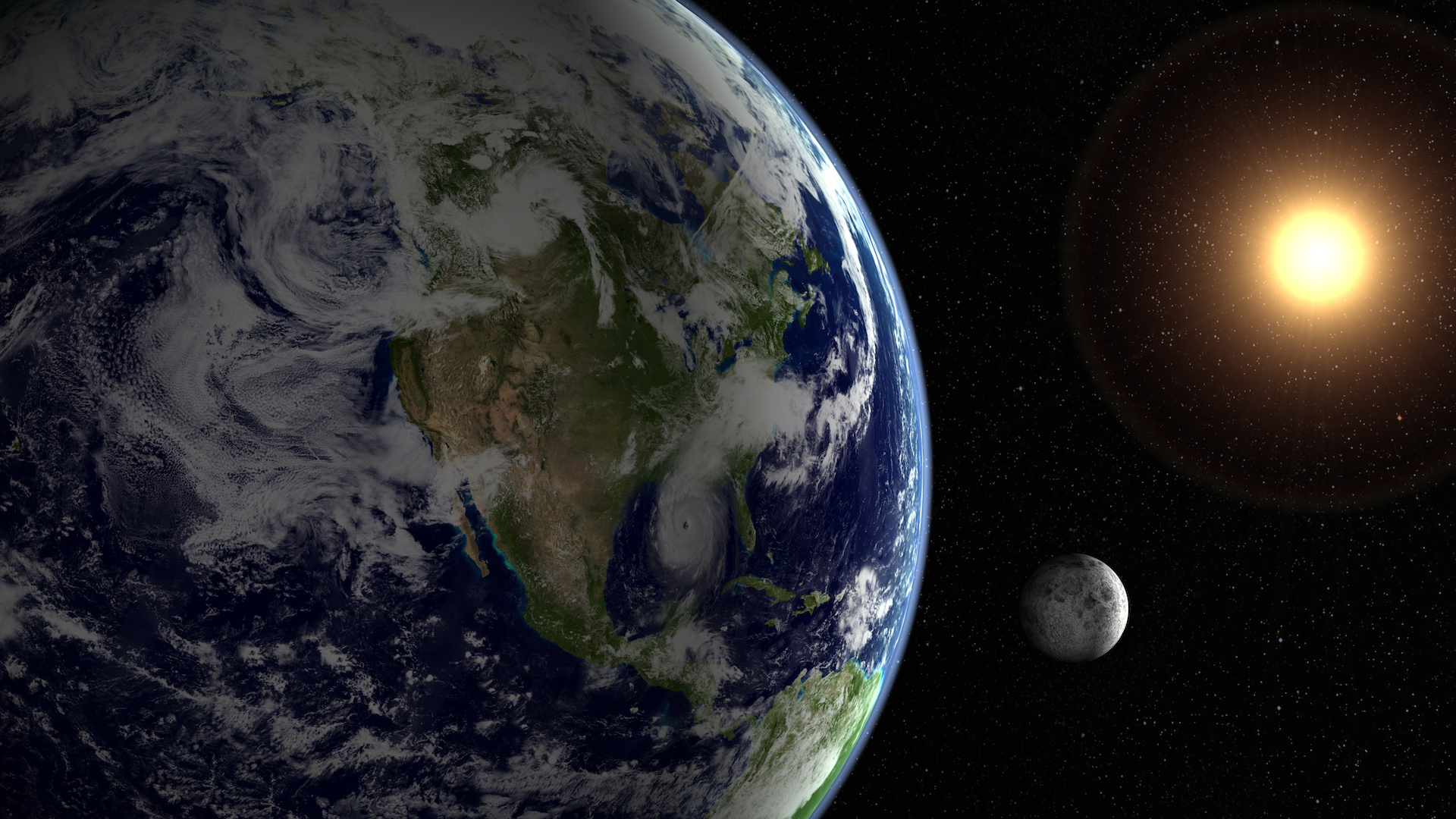
Although we can't feel Earth spinning, the daily sunrise and sunset are reminders that our planet is in constant motion. But do we know which way Earth is spinning? And is it the same direction as the sun and the other planets circling it?
The answer is linked to the formation of the solar system some 4.6 billion years ago.
It started with an enormous cloud of gas and dust that was so dense, it began collapsing down on itself, Joshua Pepper, a program scientist in NASA's Astrophysics division, told Live Science. The dense center became the sun, and planets formed in the surrounding swirl of gas.
The initial spin of this swirling cloud is still preserved today. When a rotating object shrinks, it speeds up. This is like when a figure skater pulls in their arms while twirling and they spin faster and faster, Pepper said. The sun is like the figure skater's center of gravity, and the planets and moons are like the skater's arms and legs. This is called angular momentum, and it's why the planets and sun are still spinning today.
Related: Why do the planets in the solar system orbit on the same plane?
Therefore, astronomers might expect that all of the planets in the solar system would spin in the same direction as the sun.
"To look at the direction of the rotation, we always compare it to a reference direction," said Gongjie Li, an associate professor in the School of Physics at Georgia Tech. In the case of the solar system, that reference point is the sun, which spins counterclockwise, according to Space.com, a sister site of Live Science.
Earth and most of the other planets — including Mercury, Mars, Jupiter, Saturn and Neptune — also spin counterclockwise, but there are some exceptions.
Venus spins clockwise, meaning the sun rises from the west instead of the east, Li told Live Science. Previously, astronomers thought a large object might have rammed into Venus to prompt its backward spin. Now they know that Venus' thick atmosphere is likely to blame.
According to NASA, the planet's carbon dioxide atmosphere is 90 times as thick as Earth's. The pressure under this heavy atmosphere creates friction with Venus' rocky surface and has likely slowed the planet's rotation over billions of years, Pepper said.
A 2020 study published in the journal Science also found that the sun's heat creates atmospheric tides that move in the same direction as Venus' spin. These tides may keep Venus moving slightly in a clockwise direction. A singular rotation of Venus takes 243 days on Earth, according to NASA.
Farther out in the solar system is another oddball planet, Uranus, which spins on its side. Astronomers do think a huge object whacked into Uranus early in its history.
"The early solar system was just chock-full of things smashing into each other," Pepper said.
Another hypothesis is that Uranus' orbit used to have a massive moon whose gravitational influence tilted the planet, according to a 2022 study published in the journal Astronomy & Astrophysics. In this theory, the moon eventually collided with the planet and kicked Uranus in this sideways state.
Uranus is tilted over 90 degrees, which results in dramatic seasonal changes in which winters last 21 years, according to NASA. Compare that with Earth's tilt of about 23 degrees, which creates smaller-scale modulations for a beautiful change in seasons, Li said.







